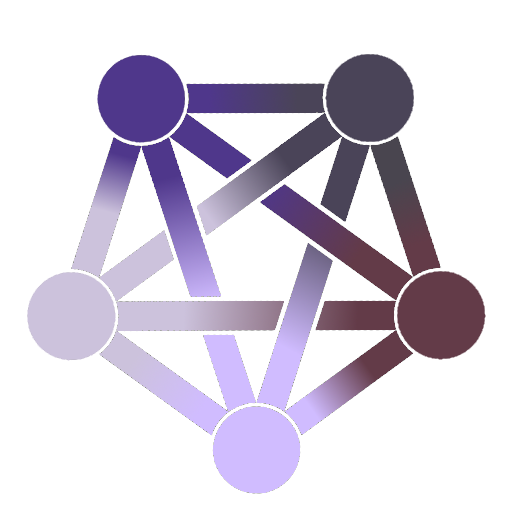- cross-posted to:
- technology@lemmy.zip
- cross-posted to:
- technology@lemmy.zip

“Why hasn’t anyone designed a building like this before?”
“Oh.”

At launch, Google’s VP of Real Estate & Workplace Services, David Radcliffe, said the site “marks the first time we developed one of our own major campuses, and the process gave us the chance to rethink the very idea of an office.” The result is a wild tent-like structure with a striking roofline made up of swooping square sections.
In other words, they erected themselves a circus tent. Ironic.

Hilarious in a way…
Of course Google would have problems with the very foundation of a technology needed for business when choosing to design the building themselves.
Like, they couldn’t consult with a professional.
Seems very… on brand for Google now.

I kept reading it as Daniel Radcliffe and I was like why the HECK is he working there?

Is this going to be the first building on KilledByGoogle.com?

“You know what would be totally sick? What if we made our building’s roof into a matrix of inverted metal parabolas?”

Sometimes it becomes clear a company is trying to do too much when these problems manifest.

I appreciate that the “Gradient Canopy” roof is covered in solar cells and collects rainwater while also letting in natural light, so maybe the problem is they didn’t do enough by not adding in some shielding, too.

That is really really cool

Sounds like bad WiFi design not building design.

I could imagine that those concave metal roof sheets reflect the electromagnetic waves all over the place, causing tons of interference…

Are they not equipped to deal with that? You’d think large metal surfaces are pretty common, so it’d be a bigger issue if so.

Well, straight metal surfaces are a whole different story from concave metal surfaces.
The former causes interference in a line in one specific direction, with roughly the width and height of said metal surface.
Concave metal surfaces on the other hand, can easily blast a whole room, depending on how concave they are.And I’m a bit out of my water here, but I believe, modern WiFi does try to
- direct its EM-waves towards the recipient, rather than send in all directions.
- adjust the strength of its signal, so that it reaches the specific recipient and not that much more beyond that.
- resolve multipath issues, so where a recipient can be reached in two or more ways, e.g. directly and through a reflecting metal surface. It can attempt to do so with 1) and 2).
But yeah, ultimately this can’t be an exact science. Recipients move around. Interferences move around. You still need additional EM-waves to advertise yourself as WiFi to disconnected devices. A reflecting interference may be situated behind a recipient, where you do need to send signals to.
And of course, no one expects
the Spanish InquisitionGoogle’s house of mirrors, where any misdirected EM-wave will interfere with everything else in the room. That just ramps up any imperfections in WiFi by a lot…
This design looks like you could get more than one roof segment involved, too, especially if there’s a lot of traffic. I didn’t know that they actually manage spacial relationships like that, but I guess it makes sense. I suppose that’s why the extra antennas on some models.
In theory, a radio reflection off something non-flat can be a treated a bit like an extra point source. My curved tea kettle won’t mess with wi-fi, because a reflection off it just looks like a straight but lossy path that’s the sum of the distances involved. If something’s a wavelength across weirder things can happen, of course, but wi-fi is in relatively short bands for the most part, and there’s more than one so it can just switch if it’s in a dead spot. A wi-fi signal will also be modulated pretty fast, though, so now you have to think in frequency space as well, I’m not sure how that works.
Google’s hipster building is on a scale that’s very different from a kettle, but at least as complex geometrically, so maybe that’s where the gap in access point design lies. They expect small distortions and big perfect reflections.

Yeah I’m thinking that’s most likely the problem.

Bad building layout could cause multipath issues though.

Shit where I work the cell service is terrible inside the building but the moment you walk outside the building it’s perfect
Our building has a wavy metal roof and wavy metal siding
Edit: Spleling

LoL mroe spleling.

This is what mimo uses to speed things up.

Yeah, whoever designed radio waves wasn’t thinking about the potential for creative architecture!

To put it more descriptively, when you do industrial scale WiFi, you’re supposed to design out the network during the blueprint stage, then go through with a signal analyzer to map out the radio properties when it’s time to install the telecom
You can put an access point in every room or every 30 feet, and tune them to work seamlessly without interference. You can do the same with cell signals too. They even make cables that are also the antenna - they’re cut with gaps in the shielding, so you can get perfect coverage inside an iron maze if you wanted to
It’s all just a matter of cost… It’s not cheap, but a few million dollars is just a line item at that scale

This doesn’t sound like a serious problem for a company like Google. They can afford to solve it by brute force — just put a Wi-Fi hotspot in every single room.

Which is also what you want really, if you have everything on WiFi. High density setups with really small cells so you can reuse channels. A building with high signal attenuation helps with that.
Having said that I’d never want to work for a company like Google.
PS:
Bad radio propagation means Googlers are making do with Ethernet cables, phone hotspots.
“Making do with Ethernet cables”? For me that’s still the most reliable and secure way of doing networking on computers. You’re at a desk, why not have a cable there. For mobile devices, sure. At my work every docking station has a cabled connection luckily.

That would be problematic on many levels.

Not really. Radios can be tuned if you’re talking about interference.

why is that?

Radio interference and roaming are the primary concerns. There’s only so many channels that Wi-Fi can run on, and they will clash if there’s too many APs near the same band. You also have to ensure that each device is configured to disconnect from a weak signal and connect to a stronger one when moving from room to room, which realistically doesn’t work flawlessly. You want to instead have a few powerful access points in each wing or whatever needs dictate.

You can reduce transmit power and enable meshing and roaming in conjunction.

This is a very common approach, as a meshnet, of course.

But if they spend millions on WiFi hotspots then how they can pay the dividends to the shareholders? If you listen to them the company is barely profitable and more cuts are needed

I’m not even sure that would be a bad solution for us. Can something like a Raspberry Pi work as a hotspot?
I wonder what exactly it is that’s messing with the signal.

My house was built in 1967. It’s a solid house. The walls are plaster and they have chicken wire in them. WiFi is a nightmare. I ended up running a few hard lines and using a mesh system.

Same here, but the house is a few decades younger, has brick walls and thick reinforced concrete floors. Early WiFi was rough, let me tell ya. At one point, I improvised a directional WiFi antenna out of Styrofoam and precisely cut wires, which actually worked. I tried three generations of DLAN after that, all of which were horribly unreliable and had nowhere near the advertised performance. I’m now moderately happy with a meshnet, which is so reliable that I forgot how to log into it to configure it.

Any computer with a network port and a wifi adapter can be turned into a wifi access point.
But there are cheaper and better alternatives than a raspberry pi
That’s probably true. Any examples off the top of your head? (I obviously haven’t had to deal with this recently)

For mass distribution of wifi APs? Some SDN solution would have a higher upfront cost but a lower running cost. Im sure all the big providers have their own system, consumer ones include ubiquiti and omada.
Cheaper than that would be mikrotik. Not really deployable at the scale of 1000s that would be required to fit every room with a wifi AP, but CAPsMAN can scale to hundreds, so still has centralised management to reduce running costs.
If it has to be cheaper still, then any cheapo SBC with wifi. While raspberry pis might fit the bill, they would be too overpowered with too many unused features to really squeeze the cost effectiveness.
Hey, its google. They could probably fork an AP into one of their home automation thingies. Then probably a whole stack of ansible scripts to try and manage 1000s of deployed linux installs
Okay, so I wasn’t quite as far off as I thought, then. Thanks.

Why the hell is a professional tech business not relying almost-exclusively in ethernet, anyway?

Because if you walk to a meeting room with your laptop, you don’t want to plug it in every time.
Also phones and tablets are a thing.

Because WiFi speeds have increased to the point where they rival wired connections, and most people use laptops which make wireless more convenient.
Wired nowadays only makes sense if you need to move massive amounts of data, want to use PoE, …or are in a high interference area. Kind of ironic they’d design a building that makes it the latter.

Aggregate bandwidth now rivals or slightly exceeds gigabit wired connections.
Where that aggregate bandwidth is shared amongst large numbers of users, bandwidth per user can suffer dramatically.
Low density areas may be fine, but cube farms are an issue especially when staff are doing data intensive or latency sensitive tasks.
If you’re giving employees docking stations for their laptops, running ethernet to those docking stations is a no-brainer.
Moving most of the traffic to wired connections frees up spectrum/bandwidth for situations that do need to be wireless.

They mostly don’t even give out desktops to devs these days, everything is in the cloud.

Do they not give out laptops with an Ethernet port? Or is the extra 2lbs too much?

At least in my faang office, there’s essentially zero ports to plug into. If you have a desktop, there’s a port, but that’s the exception. I’ve never seen anyone plug a laptop in.

I would think the metal parts of roof might be reflecting signals all around the building, which would cause interference between devices. (there is a limited number of WiFi channels), it might work better with a plastic roof, or one with RF absorbers.

Why didn’t they send an email to their facilities? How are we supposed to care?
- intensely_human ( @intensely_human@lemm.ee ) 3•7 months ago
All this tells me is that ancient Chinese evil spirits were made of wifi.
🤖 I’m a bot that provides automatic summaries for articles:
Click here to see the summary
Reuters reports that Google’s first self-designed office building has “been plagued for months by inoperable or, at best, spotty Wi-Fi, according to six people familiar with the matter.”
At launch, Google’s VP of Real Estate & Workplace Services, David Radcliffe, said the site “marks the first time we developed one of our own major campuses, and the process gave us the chance to rethink the very idea of an office.”
The roof is covered in solar cells and collects rainwater while also letting in natural light, and Google calls it the “Gradient Canopy.”
All those peaks and parabolic ceiling sections apparently aren’t great for Wi-Fi propagation, with the Reuters report saying that the roof “swallows broadband like the Bermuda Triangle.”
Googlers assigned to the building are making do with Ethernet cables, using phones as hotspots, or working outside, where the Wi-Fi is stronger.
A Google spokesperson told Reuters the company has already made several improvements and hopes to have a fix in the coming weeks.
Saved 45% of original text.

Why is arstechnica so cynical about specifically big tech?

There’s plenty in Big Tech to be cynical about, whether you work for them or not. Ars can get away with it.

I know, but arstechnica could also write other kinds of articles.

Check out the Reuters article they are referencing, titled: “Google’s newest office has AI designers toiling in a Wi-Fi desert”. Now that’s cynical, and mean.


